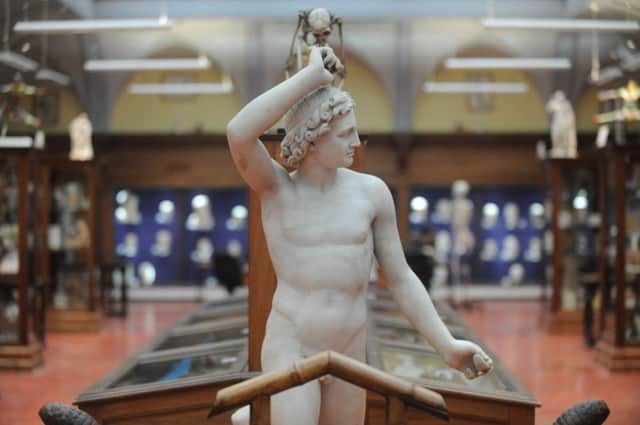Museum volunteers bridge gap with their communities


The relationship between museums, in particular voluntary-led museums, and our communities is as complex and diverse as the range of more than 400 museums that stretch across Scotland. More than half the workforce in Scotland’s museums and galleries is made up of volunteers, while two-thirds of museums are independent charitable organisations, managed directly by the community. In Scotland, local communities create museums as much as they experience them.
With around 15,000 museum volunteers across the country, they play a vital role in the viability and sustainability of our museums and galleries. An astonishing 94 per cent of Scotland’s museums are assisted by voluntary staff in some capacity, with nearly a third of Scotland’s museums and galleries being run entirely by voluntary staff. Volunteers offer both invaluable and irreplaceable support for many museums, and provide a direct and crucial link to and through the local community.
Advertisement
Hide AdAdvertisement
Hide AdThese incredible figures are drawn from research commissioned by Museums Galleries Scotland and conducted by Morris Hargreaves McIntyre. The report, which will soon be available online, found that 91 per cent of museum volunteers agreed that volunteering contributed to deepening the connections between museums and communities, 72 per cent of volunteers agreed that volunteering at the museum/gallery had made them feel more a part of the community they lived in and 62 per cent of volunteers agreed that volunteering in general promotes wellbeing, including self-confidence, physical and mental health.
Abernethy Museum, as an example, is supported by around 60 volunteers. They undertake a full range of roles and functions, including board trustees, collections management, garden and landscaping and duty volunteers, covering the day-to-day operations of the museum.
This research has shown that volunteers feel a sense of duty and pride in preserving local history.
In a different part of Scotland, volunteering at the Scottish Maritime Museum in Ayrshire is thriving, and numbers have increased in recent years. Many of the volunteers have an engineering or maritime interest and volunteer at the museum to continue to utilise their skills in retirement, maintaining the sense of camaraderie that they used to get from the workplace. Additionally, volunteers manage and run the library, respond to research requests and support the educational team, curators and visitor services staff with wide-ranging areas of the museum’s operation.
Beverly Donaldson, who is part-time volunteer manager at the Scottish Maritime Museum, is enthusiastic about the vital role that volunteers play in the museum sector. “Our volunteers are an added bonus as they contribute so much.
“At The Scottish Maritime Museum they are contributing, on average, over 500 hours a month and that has an incredible impact on the museum.
“The knowledge that our skilled volunteer engineers bring is invaluable for the conservation and restoration of complex mechanical engines that would often cease to run without their expertise.”
Volunteers themselves recognise the important role they play: 93 per cent of those surveyed recognised that they are fundamental to the operation of their museum, they are equally valued by both staff at individual museums, and by the sector as a whole.
Advertisement
Hide AdAdvertisement
Hide AdThe role of volunteering in museums is changing – as well as those who volunteer to follow an interest, or meet new friends in retirement, we are seeing an increase in young people volunteering in museums to acquire skills in areas such as event planning, marketing, digital technology and community engagement. Around 20 per cent of museum volunteers are looking for skills to help them gain employment.
Volunteers are also bridging the gap between museums and communities, and their presence has had a positive impact upon the numbers of visitors and the level of engagement, increasing the likelihood of a repeat visit.
Museums are often providers of community facilities that cannot be found elsewhere, even more so in rural areas. Some of these are obvious local resources, including cafes and shops, which are increasingly depended on to generate income for our cultural institutions in a time of harsh economic challenges.
Volunteering in museums has been around for a long time in Scotland, but it is only in recent years that we are beginning to understand its importance. It is a way of bringing communities closer together, providing skills and employability support, creating social opportunities for those who are more socially isolated, promoting well-being and allowing people to contribute their valuable skills and knowledge for the good of their community.
This new report confirms the essential role volunteers play in delivering the work of museums across Scotland. Even more encouraging is the evidence that this partnership is beneficial for volunteers and the wider community. We’ve always known that volunteers are good for museums and now we can say that museums are also good for volunteers.
• Joanne Orr is chief executive of Museums Galleries Scotland. www.museumsgalleriesscotland.org.uk